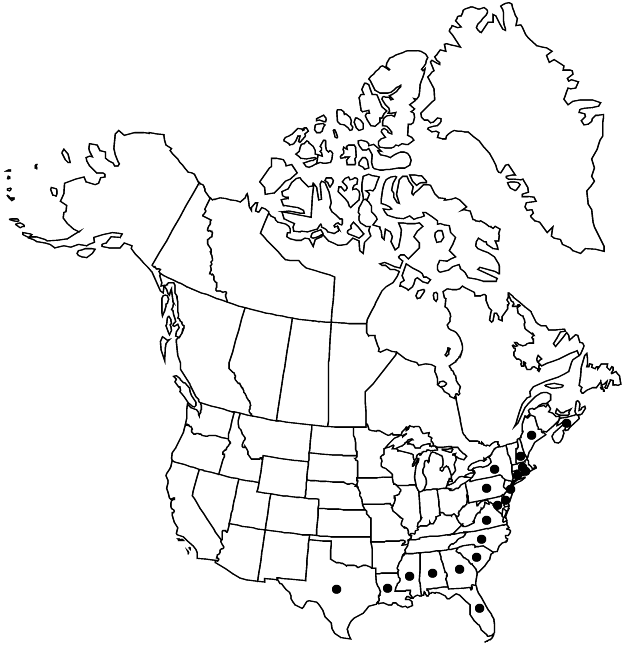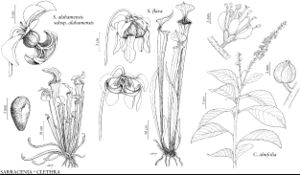Clethra alnifolia
Sp. Pl. 1: 396. 1753 ,.
Shrubs 1–3 m. Stems ± terete; young shoots puberulent. Leaves: petiole 2.5–3.5 (–6) cm; blade obovate to oblong (widest distal to midpoint), 5–9 (–12) × 2–4 (–6) cm, base cuneate to rounded, margins obscurely to clearly toothed, especially distally (proximalmost tooth averaging 3.4 cm distal to base), apex obtuse to acute, surfaces sparsely hairy and glabrescent abaxially, glabrous adaxially. Inflorescences solitary or in clusters of 2–4, (6–) 9–15 (–19) cm, axis sparsely stellate-hairy. Pedicels 2–4 mm, proximalmost averaging 3 mm, shortly stellate-hairy; bract shorter than flower, proximalmost 5–7 mm, shortly stellate-hairy. Flowers: sepals 3.5–5 × 1–1.5 mm, stellate-pubescent; petals white (rarely pink abaxially or on both surfaces), 5–8 × 4–5 mm; filaments 4–6 (–6.5) × 0.2–0.3 (–0.4) mm, glabrous; anthers 1–1.3 mm; style 6–7 mm, hairy in proximal 1/2, hairs simple, straight. Capsules subglobose, 2.5–4 × 3.5–5.3 mm. Seeds 1–1.5 mm. 2n = 16, 32.
Phenology: Flowering summer.
Habitat: Broad-leaved swamps, Chamaecyparis swamps, wet pine forests, sometimes in dry, sandy woods and rocky, acidic ridge tops
Elevation: 0-200 (-400) m
Distribution

N.S., Ala., Conn., Del., Fla., Ga., La., Maine, Md., Mass., Miss., N.H., N.J., N.Y., N.C., Pa., R.I., S.C., Tex., Va.
Discussion
Selected References
None.
Lower Taxa
"/2" is not declared as a valid unit of measurement for this property.
